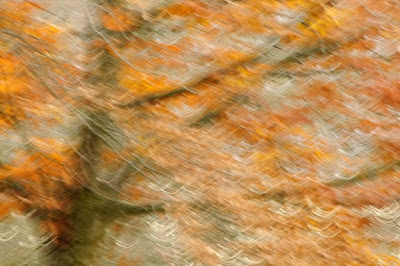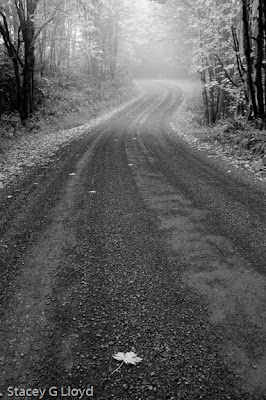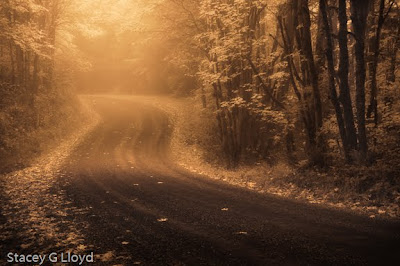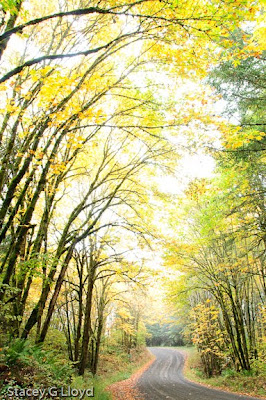-
Recent Posts
Blogroll
Categories
Google Friends
Networked Blogs
Archives
- November 2012
- October 2012
- September 2012
- August 2012
- July 2012
- June 2012
- May 2012
- April 2012
- March 2012
- February 2012
- January 2012
- December 2011
- November 2011
- October 2011
- September 2011
- August 2011
- July 2011
- June 2011
- May 2011
- April 2011
- March 2011
- February 2011
- January 2011
- December 2010
- November 2010
- October 2010
- September 2010
- August 2010
- July 2010
- June 2010
- May 2010
- April 2010
- March 2010
- February 2010
- January 2010
- December 2009
- November 2009
- October 2009
- September 2009
- August 2009
- July 2009
- June 2009
- May 2009
- April 2009
- March 2009
Monthly Archives: November 2009
Christmas List
As we jump into the holiday season, it comes time for me to give the family ideas for Christmas gifts. I don’t know about you, but this is always somewhat difficult for me. In part due to the fact that most photographic equipment is expense or things you may not want others purchasing for you. In the end, most of my Christmas lists end up being a selection of some misc gear that I haven’t gotten around to purchasing, new LCD protectors, filters, etc. Sometimes the list may contain a print from a favorite photographer. Finally there is always a list of books of DVDs from photographers whose work I admire.
Last year one of the gifts that I received was Tony Sweet’s “Visual Literacy” DVD set. This DVD set later won a Telly award in the How-to/Instructional category (some 13,000 submissions for that). I have enjoyed this DVD set and viewed many section of it several times. This DVD set gives you an intimate look at the many aspects of a fine art photographer’s day to day work. It covers shooting in the field, shooting in the studio (flower work), post-processing the images, printing, how to get started, what equipment Tony uses (and you need), etc. The most valuable part to me are the how-to pointers and tid-bits Tony provides through out the videos – things I always wondered about.
I have added a pointer to this DVD at Amazon on my favorites list in my blog sidebar. It my make a nice addition to your Christmas list.
Posted in Uncategorized
More Fall Immersions
 I haven’t been inspired to write a lot this past week, but I did manage to find some late changing maple and oaks trees yesterday which allowed me to add to my Fall Immersion portfolio. Again for the first image I took advantage of morning back lighting to create wonderful colors and “brush strokes” . In the second image I used a slight scallop side movement to create the strokes.
I haven’t been inspired to write a lot this past week, but I did manage to find some late changing maple and oaks trees yesterday which allowed me to add to my Fall Immersion portfolio. Again for the first image I took advantage of morning back lighting to create wonderful colors and “brush strokes” . In the second image I used a slight scallop side movement to create the strokes.
Posted in Uncategorized
Indoor Photography
 I have been sick most of this week and so I haven’t been outside to grab the end of the fall season shots I had planned. Instead I have played a little in the office with things I have brought indoors for some close up work in the past weeks. Here are a couple shots of decayed Chinese lanterns taken on sheets of paper using a focused beam flashlight as the source. In the first shot the paper is actually white but taking advantage of the flashlights (and not auto-white balancing) inherent color I ended up with a very warm background. In both images I chose to go with diagonal shadows to create more dynamic images.
I have been sick most of this week and so I haven’t been outside to grab the end of the fall season shots I had planned. Instead I have played a little in the office with things I have brought indoors for some close up work in the past weeks. Here are a couple shots of decayed Chinese lanterns taken on sheets of paper using a focused beam flashlight as the source. In the first shot the paper is actually white but taking advantage of the flashlights (and not auto-white balancing) inherent color I ended up with a very warm background. In both images I chose to go with diagonal shadows to create more dynamic images.
Posted in Uncategorized
Tapestry Mirror
 I whipped up a mirror image of one of my tapestries just to see what I thought of it. While I like it, it is a bit different from the other images in my tapestry portfolio. I will most likely put it in a portfolio of mirrors one day. I am starting to get a few of those set aside. Creating mirrors like this is fun and reasonably simple. See Tony Sweet’s blog video, click here , for one way to create a mirror.
I whipped up a mirror image of one of my tapestries just to see what I thought of it. While I like it, it is a bit different from the other images in my tapestry portfolio. I will most likely put it in a portfolio of mirrors one day. I am starting to get a few of those set aside. Creating mirrors like this is fun and reasonably simple. See Tony Sweet’s blog video, click here , for one way to create a mirror.
Posted in How To, Uncategorized
More Tapestries
 I have been busy the last few days working on new images for my “Fall Tapestries” portfolio. For this project the number of images is restricted to 10 image total. It has been quite difficult trying to edit down to that limit -which images should be added and removed to create more depth while maintaining or increasing the overall quality of the set. I have included some of the candidates here in the blog.
I have been busy the last few days working on new images for my “Fall Tapestries” portfolio. For this project the number of images is restricted to 10 image total. It has been quite difficult trying to edit down to that limit -which images should be added and removed to create more depth while maintaining or increasing the overall quality of the set. I have included some of the candidates here in the blog.

Posted in Uncategorized
Symbolism in Composition
 Besides the use of lines, perspective, color, etc. to achieve emotional impact in you image, one can use symbolism. For example, one that is commonly used is an empty chair or seat. I find that it can have a different impact depending on the surrounding context. I have included images that illustrate this. The first image from a mausoleum has a couple symbolic elements. For now we will focus on the empty bench. Here the bench helps convey the sense of loss – something/someone missing.
Besides the use of lines, perspective, color, etc. to achieve emotional impact in you image, one can use symbolism. For example, one that is commonly used is an empty chair or seat. I find that it can have a different impact depending on the surrounding context. I have included images that illustrate this. The first image from a mausoleum has a couple symbolic elements. For now we will focus on the empty bench. Here the bench helps convey the sense of loss – something/someone missing.
 The second and third images present much more pleasant surroundings. I have found these images make the viewer wish they were sitting there and really draws the viewer into the image. Sometimes an empty bench may make the viewer feel loneliness.
The second and third images present much more pleasant surroundings. I have found these images make the viewer wish they were sitting there and really draws the viewer into the image. Sometimes an empty bench may make the viewer feel loneliness.
Going back to the first image, let us analyze it a bit more:
-
Empty seat symbolism – loss.
-
Wilted roses – reinforces the idea of death.
-
Color – the color in the roses grabs the viewer’s eye. The lack of color in the rest of the image again creates a sense of loss, subdues the mood, etc.
-
Lines on the granite wall lead you from the roses back to the empty bench.
-
Light – the brighter light on the bench highlights the empty bench and may five a sense of hope to some.
 What are some other strong symbolic elements you have seen used? Note, that some symbols may have emotional ties for you but not others.
What are some other strong symbolic elements you have seen used? Note, that some symbols may have emotional ties for you but not others.
Posted in Uncategorized
Photography Books, etc
In case you have noticed, I added an Amazon widget on my blog. It contains and will only contain books that I own and have read (for the most part – some don’t lend themselves to straight reads – more like references). The first book I will point out is “The Photographer’s Eye” by Michael Freeman. Its an excellent book on composition and touches on some areas not often discussed – the shape of your image (the frame) for one. Personally I have felt that second to developing an eye for light, is the development of an eye for composition.
Blog image: nice morning shot of Mount Hood on a misty fall morning. Illustrates the compositional technique of layering or repetition.
Posted in Uncategorized
Fall Immersions
 There has continued to be quite a response to my two blogs on photographing for emotional impact. Because of that I will be coming back to that topic soon with discussions on how the different aspects of composition convey emotion – framing, subject placement, focal length, etc. So stay tuned if that is of interest to you.
There has continued to be quite a response to my two blogs on photographing for emotional impact. Because of that I will be coming back to that topic soon with discussions on how the different aspects of composition convey emotion – framing, subject placement, focal length, etc. So stay tuned if that is of interest to you.
In the meantime, I have been working on additions to my impressionistic images this fall, in addition to the “Fall Tapestry” images I posted a couple blogs ago. I have tentatively call this portfolio – Fall Immersions. The blog image is one of my favorites. Immerse yourself in the colors of fall and enjoy the images (click on the image to see others in this portfolio).
Posted in Uncategorized
More Emotional Impact

It appears my last blog entry on emotional impact in photography struck a cord with many of you out there. So in that same line, I have added two more images taken at the same time as the previous 3 images that take yet different approaches to the subject.
The first image is similar in feel to the third one in my previous blog, but is a bit different. For me it conveys the emotion of being left behind. How about you? Analysing the image:
- Not really hi or low key – just average tonal range – maybe a touch on the dark side.
- Wide angle lens – gives is that since of distance from the foreground leaf to the curve.
- Road line is more straight up and down – less dynamic or exciting than a diagonal. This is in keeping with the more subdued (or negative) emotion.
- Foreground object close to front frame edge (not at the classic 1/3 location). This reinforces the left behind or loneliness of the image.
- Black and white image – again less vibrant and more subdued.
The second image was shot while zooming and panning using a long shutter exposure. The panning was to keep the end of the road as the zoom focal point. It has been blended in Photoshop with a “watercolor” version generated with Topaz Labs Simplify. What feelings does this rendition of the image illicit?

Posted in Uncategorized
Photographing for Emotional Impact
Really good photographs not only present a technically fine image to the viewer, but they should have emotional impact. I have included in this blog three images shot within minutes of each other of the same subject, each designed and processed for a different emotional impact.
 The second image has a more subdued, moody and mysterious feel. Analysing this image:
The second image has a more subdued, moody and mysterious feel. Analysing this image:
The first image is designed to covey the joy of a walk down a country road on a fall day. Lets look at some of the factors that create that impact:
- Hi key image (somewhat) – highlights are allowed to blow out and the majority of the tones are on the lighter end of the scale. This creates an airy uplifting feeling.
- Vertical lines – the vertical lines of the tree have positive impact (as compared to horizontal ones).
- Diagonals – diagonal lines create energy and a sense of movement. The trees are at a slight diagonal in this image.
- Vertical framing – a vertical frame like any vertical lines in the image reinforces the positive feel.
 The second image has a more subdued, moody and mysterious feel. Analysing this image:
The second image has a more subdued, moody and mysterious feel. Analysing this image:- Low key image – most of the image is to the dark side – creating moodiness.
- Horizontal frame – horizontal lines or framing can make an image more subdued and tranquil.
- Post processed to emphasize the fog – fog adds mystery.
- Monochromatic – eliminating the bright fall colors again creates a more subdued retrospective image.
- Curved road – a path or road that disappears around a bend creates a sense of mystery. “What lies ahead?”
The third image conveys different emotions (shot again at the same time as the others). What do you feel when you look at it?

Posted in Uncategorized







